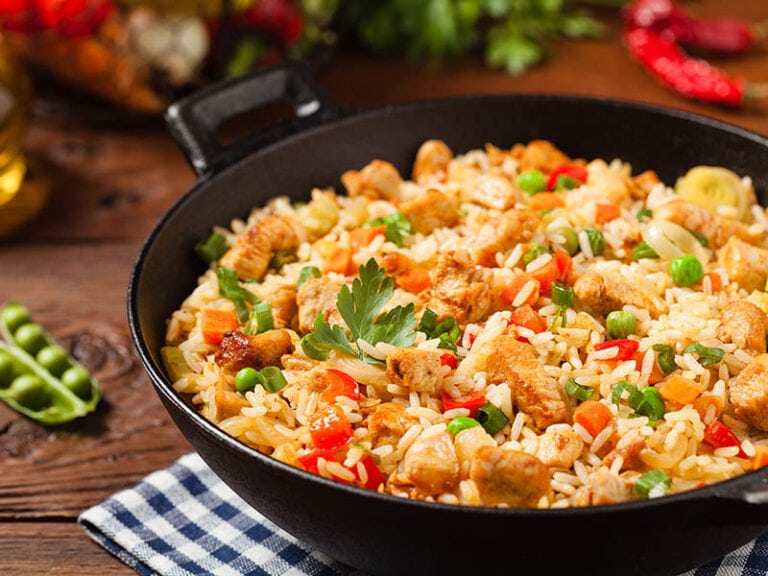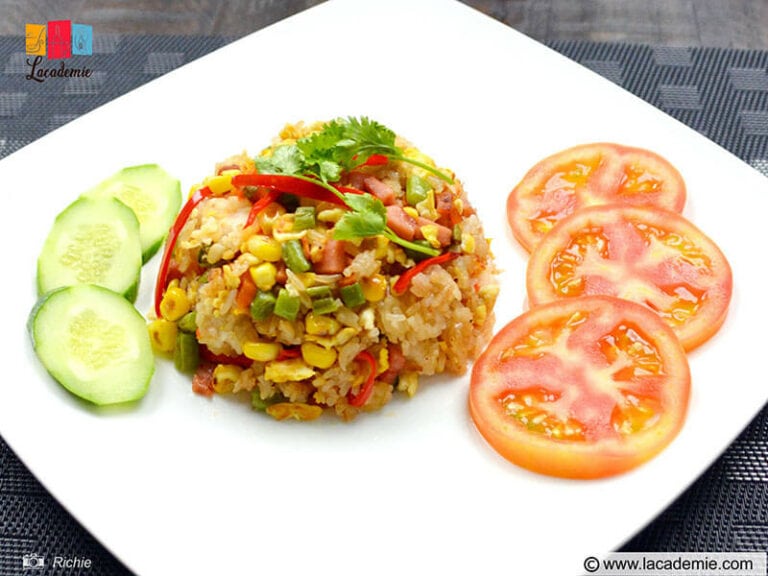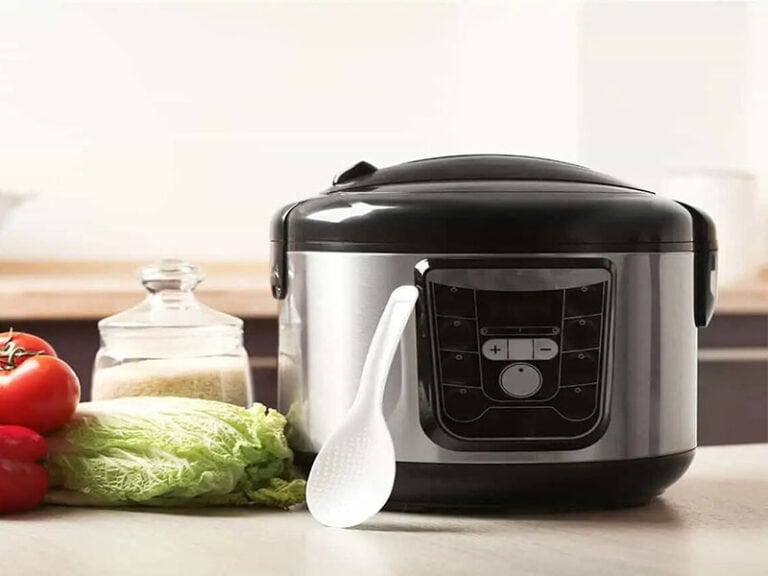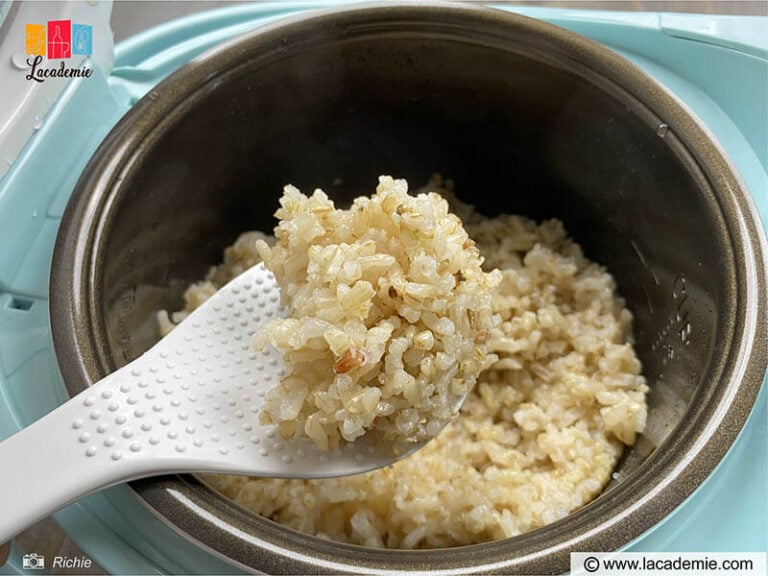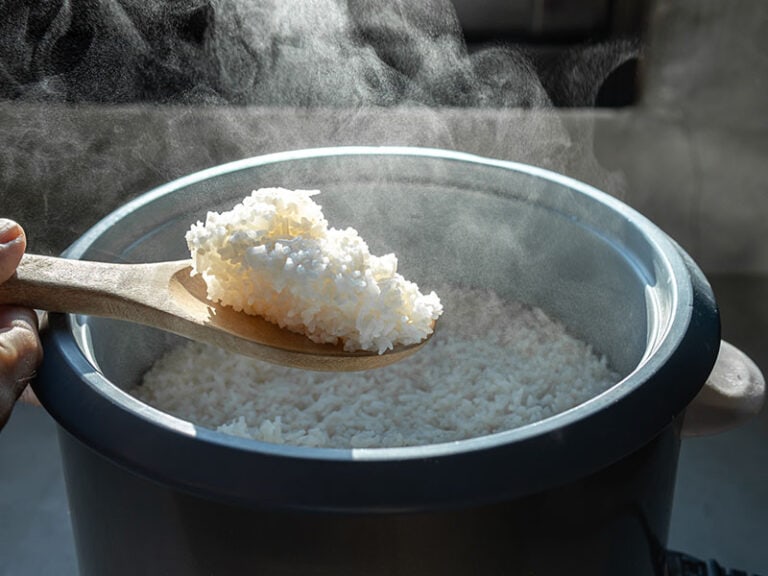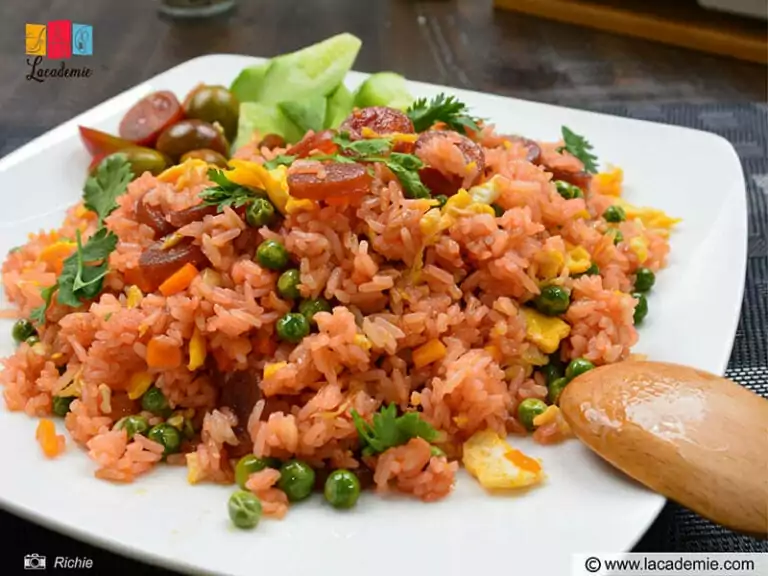How much water for 2 cups of rice is the question you might ask or be asked more than once in your lifetime. I remember asking my mom that same question the first time I had to cook rice.
There are many times I burned my rice, while the rice was either too dried or too wet on other occasions. Thankfully, with life-long practice and experience, I have learned rules and tips to cook perfect rice that I love to share with you in this post.
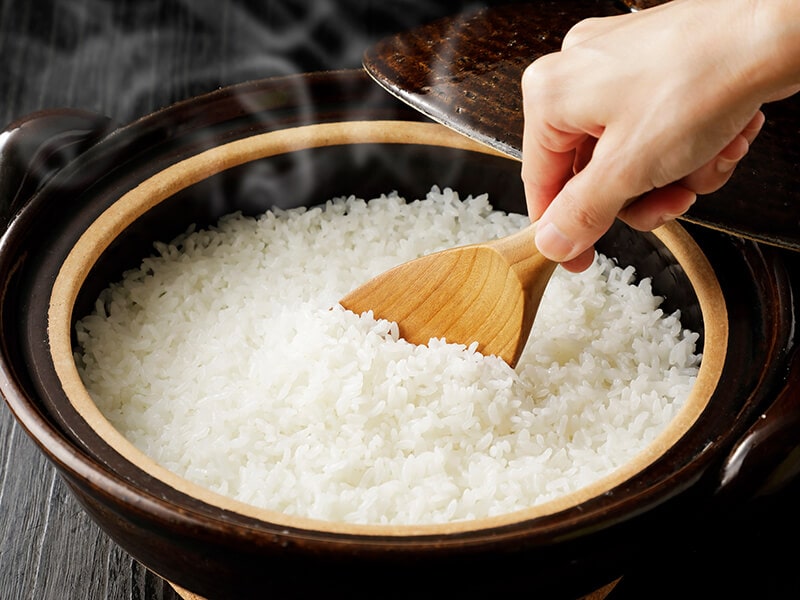
How Much Water For 2 Cups Of Rice – The Standard Ratio
Water and rice proportions are vital in cooking good rice. Too little water makes the rice hard or even uncooked, but too much water results in wet, slimy rice. Therefore, there is a general rule that you need to know.
[rice_table]General Rule: Standard Water To Rice Ratio
The standard water-rice ratio is 2:1, which means 2 parts of water to every 1 part of rice. So, applying this principle, you will need 4 cups of water for 2 cups of rice. If you cook more rice, you can multiply the number of rice cups by 2 to get the water amount.
For example, cooking 3 cups of rice requires 6 cups of water. However, as you know, there are so many kinds of rice, and each rice type has different properties. So, the water ratio should change to match the water demand level of each kind of rice.
One more element to having just fine rice is your preferences. I like softer rice, so I always pour enough water into the rice, plus a few extra teaspoons of water. But if you prefer firm rice, use slightly less water than suggested.
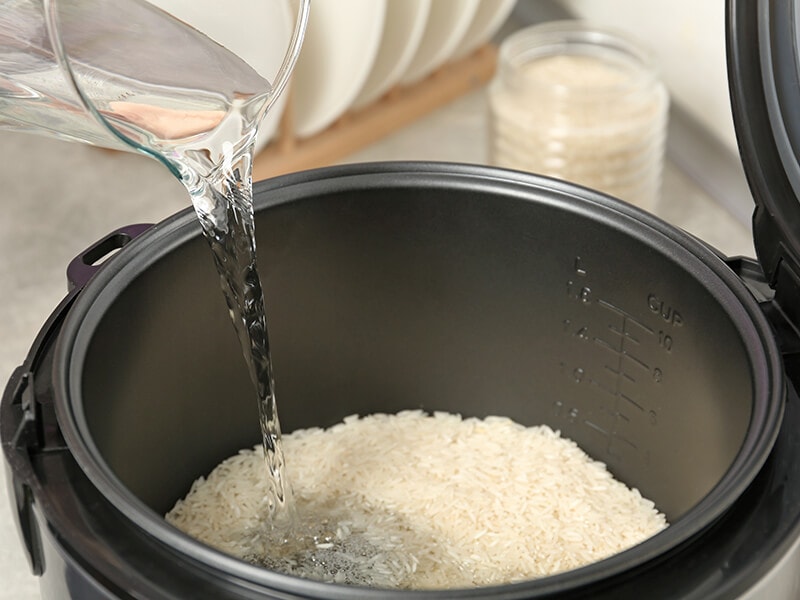
Different Kinds Of Rice
Besides considering the water-to-rice guideline, you need to know what kind of rice you are cooking and adjust the water level to fit the rice’s characteristics. Doing so will remove the chances of extremely wet or dry rice.
Some rice, like short-grain white rice, does not need a lot of water. Meanwhile, other varieties, such as brown rice or wild rice, will be dry and hard without adding extra water.
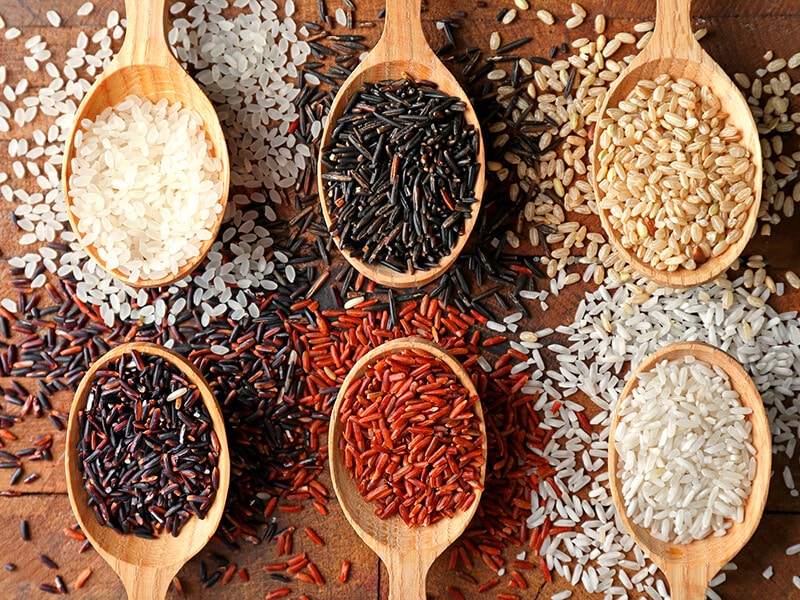
Long-Grain White Rice
This classic rice is the most common kind of rice in American supermarkets. With a long and thin shape, they can be very fluffy. The good ratio for this rice would be 2:1.
Medium-Grain White Rice
There is a variety of medium-grain white rice, which are round in shape but firm in texture. They can absorb a lot of water without being sticky. A 1 ½ : 1 liquid-rice ratio is good for them.
Short-Grain White Rice
This type is very short and contains more starch than the long grain. While the longer grain makes the rice fluffier, the shorter grain is stickier. Due to its sticky texture, people use it to make sushi or rice puddings. A 1 ¼ : 1 ratio will be best for this kind.
Basmati Rice
This variety is grown in India, Pakistan, and some parts of the US, with a puffy texture and nice aroma. You can find it in curry or pilaf. To cook this rice, you can use 1 ½ cups of water for 1 cup of rice.
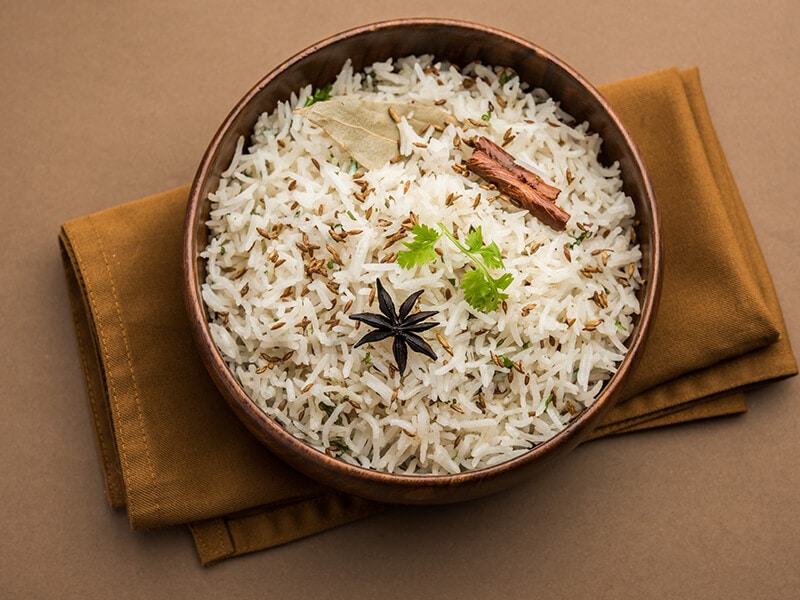
Jasmine Rice
Jasmine rice is a popular Thai rice with a special scent, just like its name. This kind of rice sticks together slightly. 1 cup of this rice requires 1 ¾ cups of water.
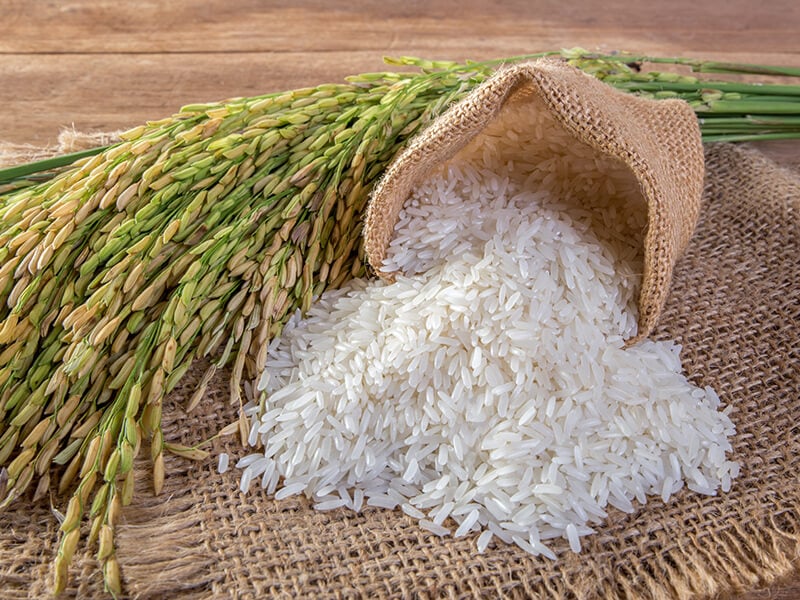
Brown Rice
Brown rice is healthy whole-grain rice with the outer hull removed. This variety provides various nutrients such as dietary fiber, magnesium, manganese, and many others. Brown rice is very beneficial in lowering cholesterol levels and other health risks(1).
Brown rice has a nutty and chewy texture. Generally, you need 2 ½ cups of water for 1 cup of rice. This ratio can change depending on whether it is long-, medium- or short-grain. So, you should check the package instructions for the exact ratio.
Black Rice
Black rice is also called forbidden rice since it was only served to the aristocracy in ancient China. It has the same antioxidant as blackberries and blueberries, which give them a dark color. You can use the same water-rice ratio as brown rice, which is 2 ½ : 1.
Sushi Rice
Like Calrose rice, this short-grain glutinous white rice is sticky and combined with rice vinegar to make sushi. Add 1 ⅓ cup of water for 1 cup of rice.
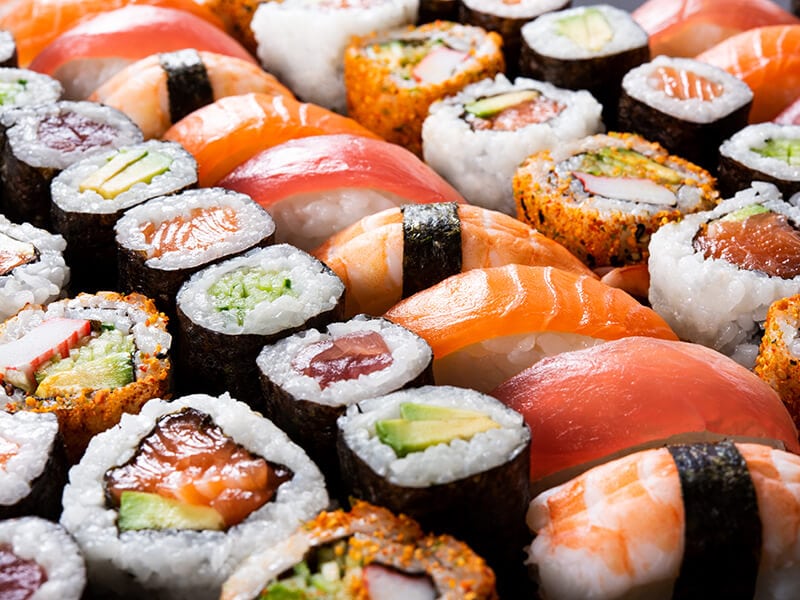
Parboiled Rice
Parboiled rice contains more nutrients than regular white rice because it is soaked in its hull before removing it. 2 cups of water for 1 cup of rice is good for parboiled rice.
Wild Rice
Wild rice is not actual rice but seeds of marsh grass. It has a nutty and earthly flavor and requires plenty of water in cooking. To cook 1 cup of wild rice, add 2 cups of water.
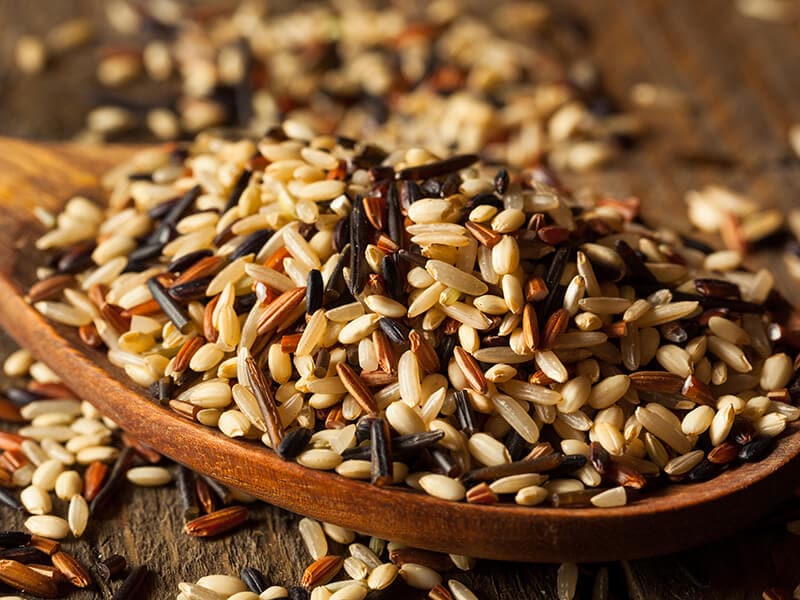
Sticky Rice
One of Thai famous dessert recipes calls for sticky rice, coconut, and fresh ripe mango slices. It is best to soak it overnight and then steam it. Sticky rice only needs a little bit of water. Measure 1 ¼ cups of water when cooking 1 cup of sticky rice.
Cooking Times
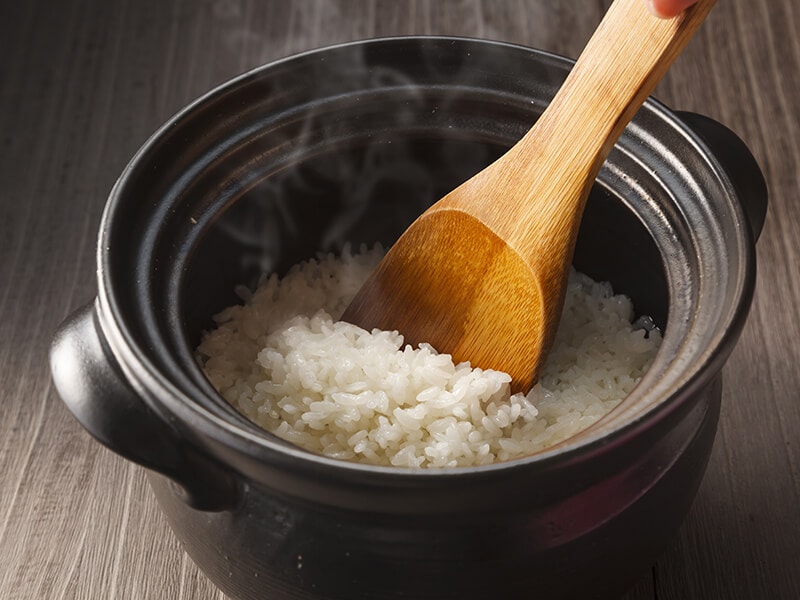
In addition to the amount of water, the cooking time determines how well your rice turns out. Except for whole grain rice, which still has its hulls intact, most rice takes an average of 15 to 20 minutes to cook.
Cooking times vary depending on the rice types. Generally, the rice will take at least 15 minutes to absorb the water and cook through fully. Cooking rice for a shorter time may result in half-cooked, uncooked, or wet rice.
When cooking longer, the heat and steam make your rice softer. However, leaving the rice too long on a stovetop can make it slimy or burn out at the bottom of your pot.
Usually, you can find instructions about the water amount and cooking time on the rice package for that specific rice. The table below summarizes them for various rice types.
The Finger Method For Measuring Water
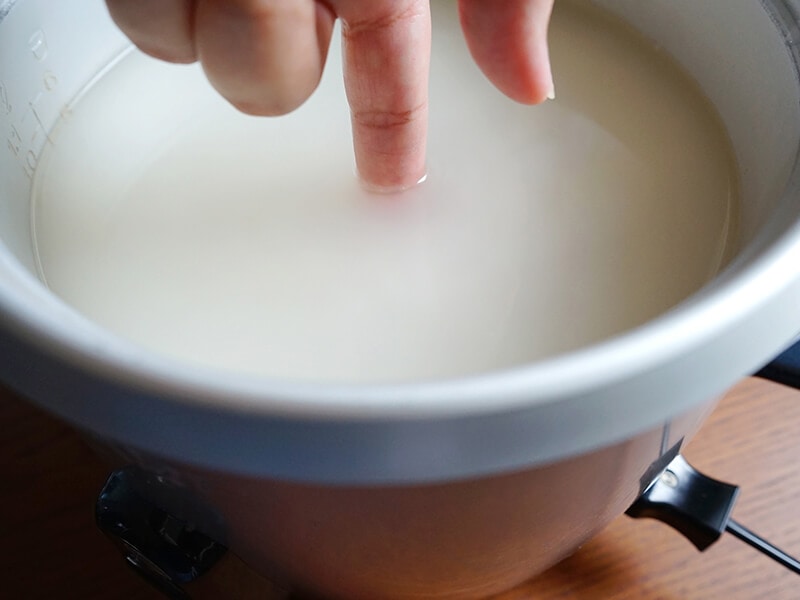
I have applied the finger method for measuring water to cook so many times, and the rice always turns out well. This is very simple: use your index finger to measure the water level.
The first step is to rinse your rice and make sure that the rice is level in the pot. After that, place your fingertip straight on top of the rice. Finally, pour water up to the first knuckle joint. That is the exact amount of liquid for cooking rice.
This method works well with white rice. Of course, you can always adjust the water amount to suit your preferences. Add some more water to pass the first knuckle for brown or black rice, and cook it for longer.
Learn how to use your finger to measure water exactly in cooking rice.
How To Tell When The Rice Is Done Cooking?
Cooking rice is an easy task, but knowing when the rice is ready is slightly trickier. Normally, it will take 15 to 20 minutes to cook white rice. Yet it is good to test whether it is really cooked by checking the water absorption and tasting its texture.
After you have cooked the rice for about 15 minutes, open the lid to see how much remaining water is. If the water is almost gone or gone, it’s usually done. Nonetheless, there are cases when the rice still needs a few more minutes to cook.
So, the best way to tell if the rice is already done is to taste it. While undone rice will taste somewhat crunchy or hard and chewy, ready rice is soft and cooked through to the inside. In contrast, overcooked rice turns mushy and falls apart in your mouth.
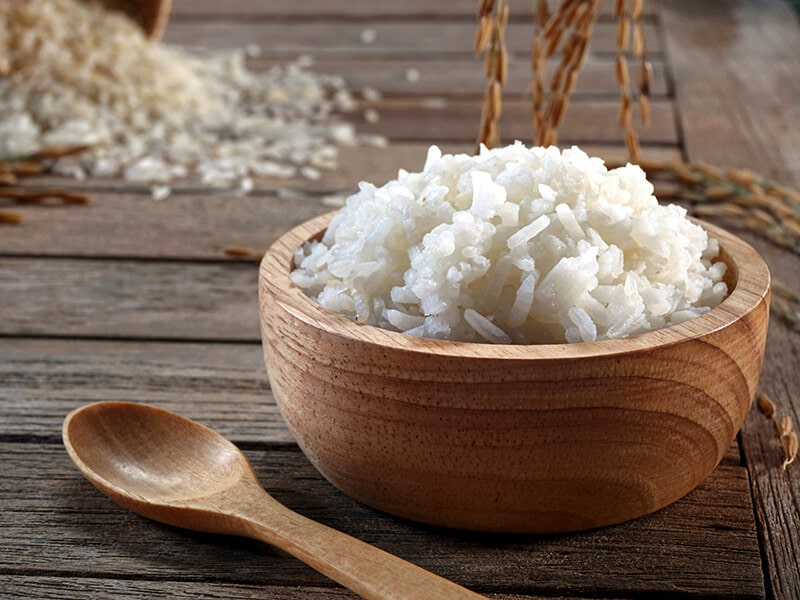
How Much Does Raw Rice Expand When Cooked?
Rice absorbing water when cooking expands to a much larger amount. The more water the rice absorbs, the larger it expands. Generally, a cup of white rice will yield approximately 3 times, whereas 1 cup of brown rice gives up to 4 cups of cooked rice.
Knowing this will help you measure how much rice is enough to feed your family. Also, you need to choose the right-size pot that gives enough space for the rice to expand. Cooking too much rice in a small dish will prevent the rice from being uncooked thoroughly.
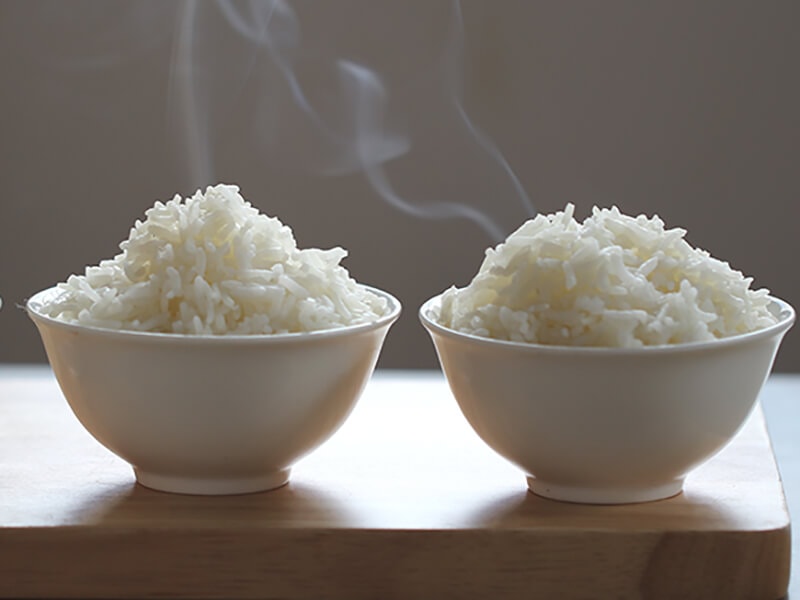
Different Methods Of Cooking Rice
Thankfully, nowadays, there are many kitchen appliances to make cooking rice easier. So, find out what they are and which methods you have tried and which have not.
Stovetop
Cooking rice on a stovetop is one of the oldest methods. Though it takes more time and effort since you are the one who supervises the whole process, the rice is so good afterward. So, here is how you do it.
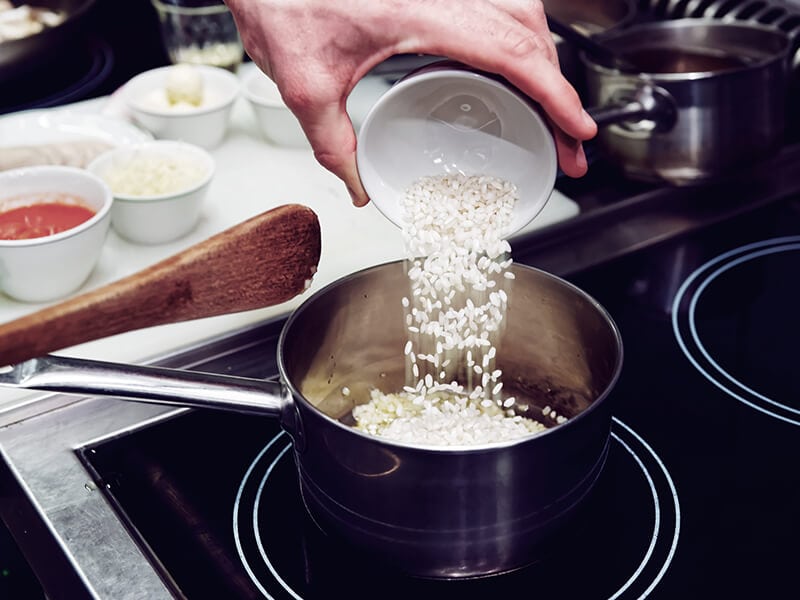
Step 1: Rinse The Rice
First, add rice to a right-size pot, and wash it well with cold water. Washing rice before cooking reduces the number of nutrients like iron, folate, thiamine, and niacin(2). But, it helps eliminate any dirt or buggies in the rice.
Step 2: Add The Right Amount Of Water
After the rice is clean, pour water into the pot. Measure the water correctly by using either the guideline mentioned in the previous sections or the finger method.
Step 3: Simmer
Cook the rice at high heat until it boils. After that, reduce to low heat and simmer for 10 minutes.
Step 4: Cook It Until It’s Tender
Cover the lid and allow it to cook at low heat for about 10 minutes more. This step would ensure that the rice is cooked through and tender to the inside.
Step 5: Fluffing
When the rice is ready, turn off the fire. Fluff the cooked rice with a fork to make it light and fluffy, and you can serve it with your favorite dishes.
This is how Gordon Ramsay makes his perfect rice using Basmati rice.
Microwave
This is among the fastest ways to have rice cooked. If you are busy, you might want to try this convenient method.
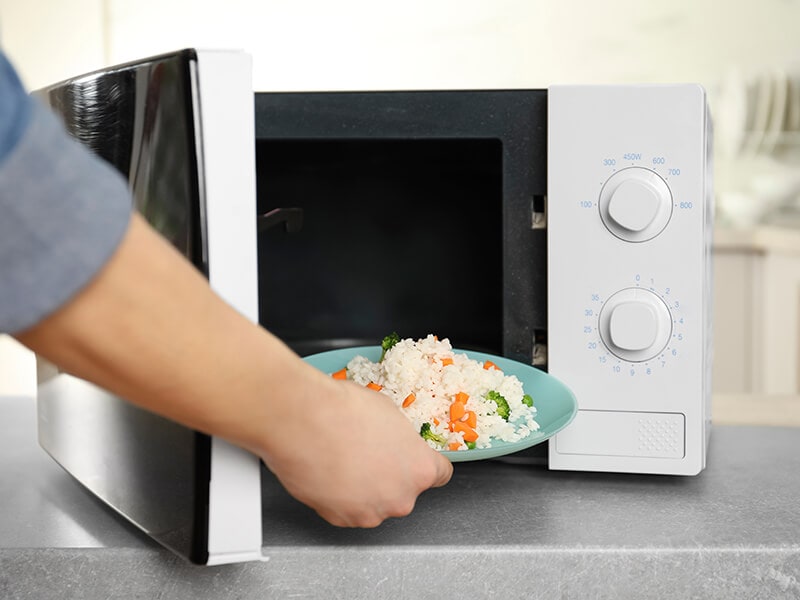
Step 1: Wash The Rice
Add raw rice to a microwave-safe container and wash the rice with cool water several times. Pour out the water and keep the rice in the pot.
Step 2: Pour In Water
Once the rice is clean, you can measure enough water and pour it into the pot. Next, cover it with the lid. Notice that you need to use a lid with air vents; otherwise, excessive hot steam in a very air-tight pot can cause explosions.
Step 3: Microwave The Rice
Next, microwave the rice at full power for 5 minutes. Then, reduce the power to half and cook it for 15 minutes more. Last, let the rice rest for 5 minutes to cook thoroughly. Once you complete this process, you will have well-cooked rice.
If you want to try cooking rice in a microwave sometimes, this guide is here for you.
Instant Pot
Instant pot is useful and convenient for making many dishes, including rice. You can quickly cook white or brown rice in just a short amount of time. So, here are the steps for you.
Step 1: Wash The Rice
Like all the other methods, it is good to wash the rice before cooking. Besides removing dirt, it provides moisture and makes the rice taste better.
Step 2: Measure Water Exactly
You can follow the user’s manual for cooking rice on the Instant Pot. Some manuals may say the same water-to-rice ratio, but it is better to add more water when you cook brown or wild rice.
Step 3: Pressure Cook The Rice
Next, close and lock the lid and set a high pressure to cook it. The cooking time for common white rice like jasmine or basmati is 5 minutes, 10 minutes for brown rice, and 15 minutes to cook wild rice.
Step 4: Natural Release
The natural release for 10 minutes will be sufficient time to rest the rice. This allows the rice to cook thoroughly and produce fluffier rice. Once the release is completed, use a fork to fluff the rice and serve.
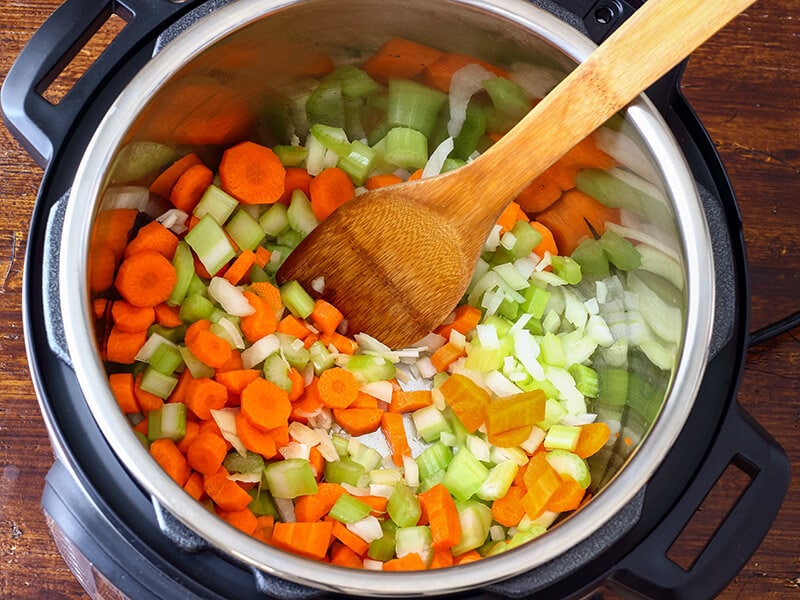
Rice Cooker
Cooking rice in a rice cooker is effortless. All you need to do is rinse the rice, add water according to the guideline of the cooker and turn it on. Once it is done, the cooker will automatically turn to warm mode.
Allow the rice to rest for 5 minutes; then, you can fluff it up and serve. Rice cookers are good for cooking rice evenly. When they have heated and cooked the rice to a certain degree, they automatically switch off the “cook” function. Thus, you can never burn up your rice.
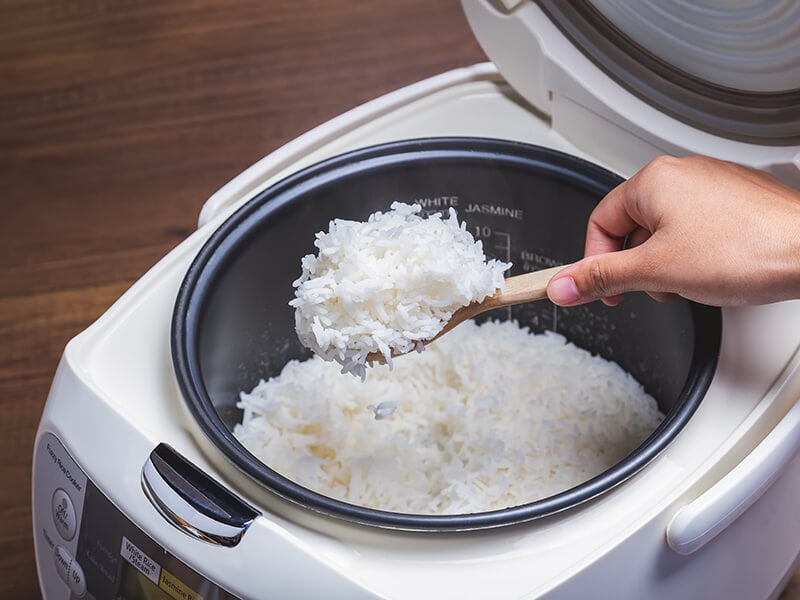
Pressure Cooker
A pressure cooker is another alternative option for making rice. This method is not only easy but also time-saving. When it comes to cooking rice, I recommend that you rinse the rice. Measure the right water-rice ratio and add them to the cooker.
Lock the lid and cook it for 2 to 3 whistles. Remember, when using pressure cookers, you must be cautious of the hot steam escaping from the cooker. So, let the steam escape before opening the lid. After that, you can serve your hot rice.
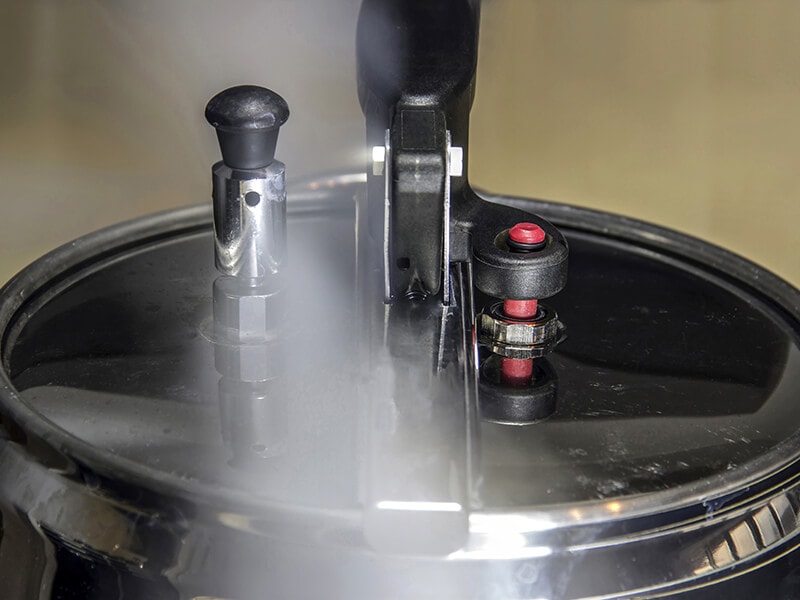
Tips For Cooking Delicious Rice
Once you have chosen a suitable method and applied the correct liquid-to-rice ratio and cooking time according to your kind of rice, you have come close to the end of perfecting the rice. There are just some more tips to make the rice even better.
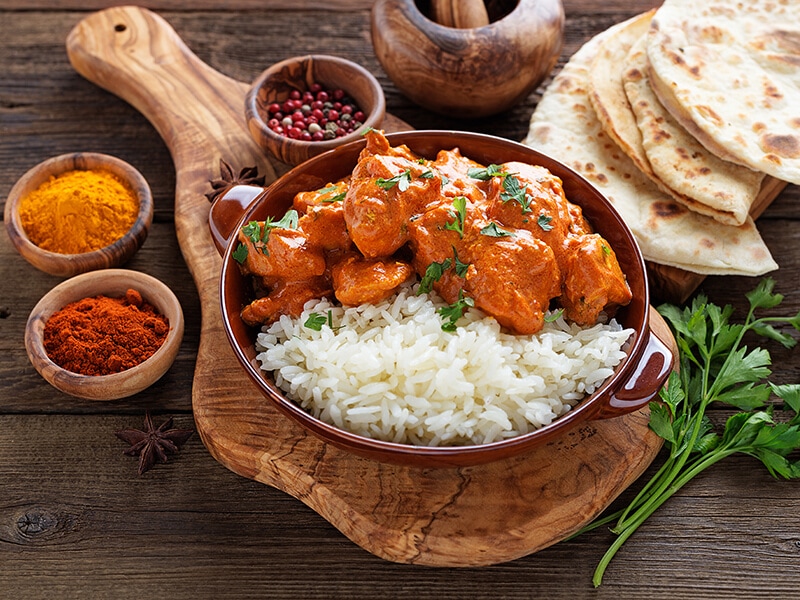
Choose The Right-Size Pot
Choosing the appropriate size for the cooking pot is worth considering. As raw rice will yield 3 to 4 times as much when cooked, a good question is whether the pot gives sufficient space for the rice to expand.
For example, cooking 5 cups of rice in a too-small pot is a bad choice. The rice will turn out either half cooked or cooked at the bottom and uncooked at the top. On the other hand, using a big pot for 1 cup of rice is neither good. So, choose wisely!
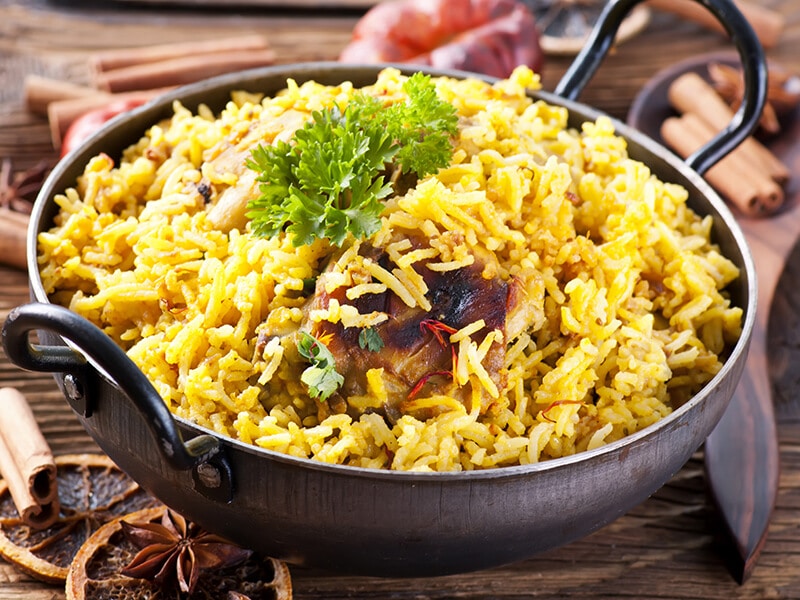
Use Well-Fitting Lid
A well-fitting lid is important in cooking rice because the rice needs hot steam to cook through. If you use an unfitting lid, it can’t keep all the steam and heat. Water will evaporate and dry out quickly while the rice is uncooked.
Boil Water Before Adding Rice
There are several benefits of boiling water before adding rice. The boiling water will prevent the rice from sticking to the bottom and side of the cooking pot. Besides, following this process helps cook the rice more evenly.
Low Heat
After you have boiled the water, you should lower the heat. Cooking at a low heat not only gives time for the rice to cook slowly and evenly but also avoids burning the rice at the bottom. High heat would otherwise dry out the water too quickly.
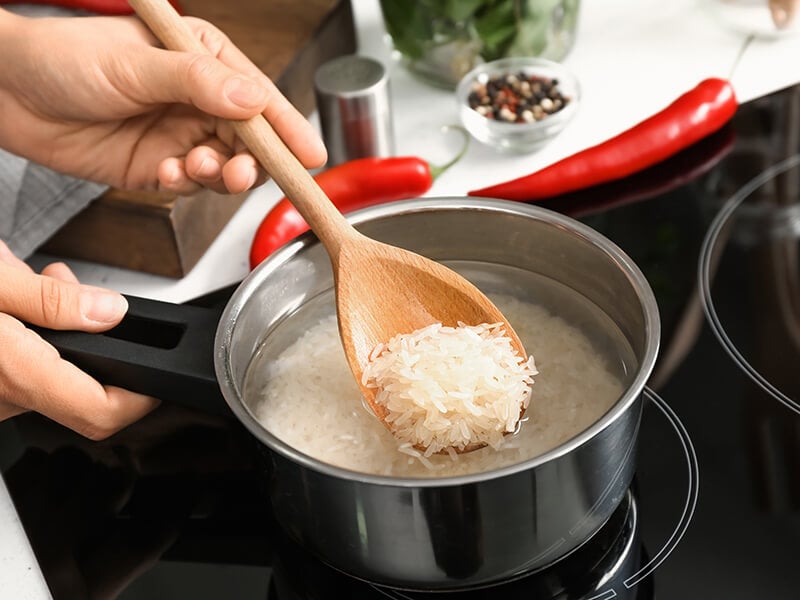
Add Seasonings Or Flavors
Different regions may have various practices in terms of cooking rice. To make plain rice more flavorful, some people like adding a little salt and olive oil. I love using chicken broth for cooking rice, which makes it so tasty.
You can also add other herbs like turmeric or saffron and seasonings to turn the white rice into a more colorful and yummy food.
Here are some great rice recipes to replace regular plain rice.
Avoid Openings While Cooking
The closed lid keeps the hot steam inside to cook the rice. The steam escapes every time you open it, and the water evaporates. This leads to a longer time to cook and, even worse, undone rice. Therefore, you should avoid lifting the lid.
Fluff The Rice When It’s Done Cooking
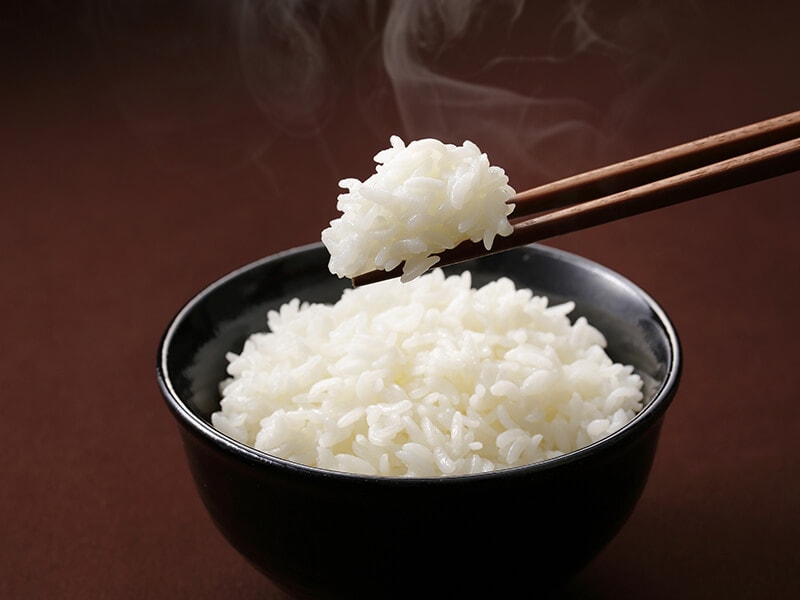
This is the last thing to do to have perfect rice. Fluff the rice when it is done so that it will be light and fluffy. This step helps you serve the rice easier and keep it from sticking together and forming a big block.
Easy Ways To Store Leftover Rice
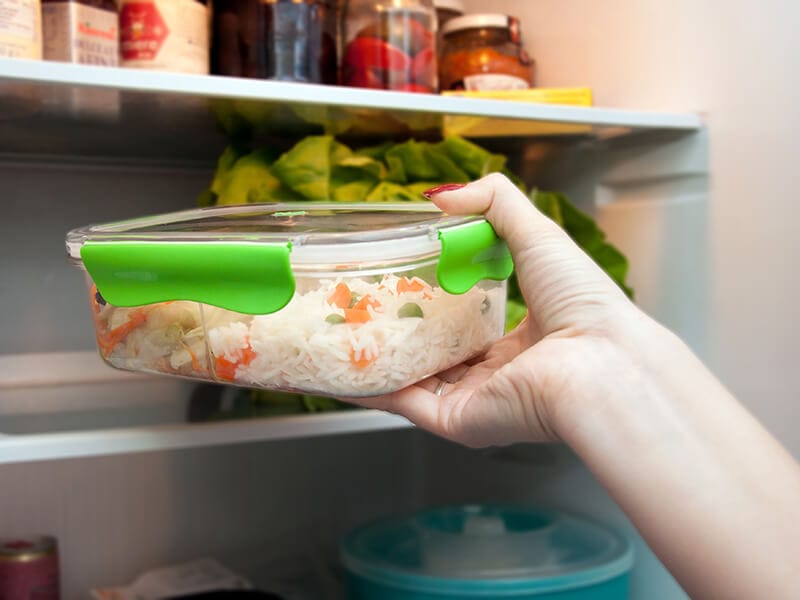
You should not leave rice at room temperature for more than 2 hours. This causes bacteria growth and risks of foodborne illness. Therefore, when there is leftover rice, you should store them properly.
If you cook rice in a rice cooker, you can keep the rice in the cooker with “keep warm” mode. This will allow the rice to be warm and safe to eat for a day. Otherwise, you can refrigerate or freeze cooked rice to keep it longer.
Put the leftover rice in a tight plastic bag or container, then place it in the fridge or freezer. It will last for 4 to 6 days in the fridge and up to 6 months when frozen.
How do you turn leftover rice into yummy fried rice? Follow this guide!
FAQs
Rice is so important and common in everyday meals, so you might have some other questions about it like others do. So, check out these frequently asked questions.
Perfect Rice Makes Greater Meals
Rice plays an important role in daily Asian meals and is commonly served in American dishes. Sometimes a dinner becomes unsatisfying because of the imperfectly cooked rice. Now you know about the water-rice ratio and other important tips for making good rice.
I hope that you have acquired a helpful guideline to improve your meals. If this post is useful, please like or share it with others. Feel free to share your experience making rice or ask other questions by commenting below.
References
- hortonj4 (2022) Brown vs. White Rice: Which is healthier?, Cleveland Clinic. Cleveland Clinic.
- Center for Food Safety and Applied Nutrition (no date) What you can do to limit exposure to arsenic, U.S. Food and Drug Administration. FDA.

